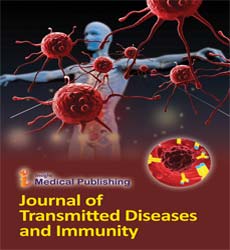Live imaging CAR19T therapy: immune response under a new light
Joint Event on 22nd Edition of International Conference on Immunology and Evolution of Infectious Diseases & 12th Edition of International Conference on Tissue Engineering and Regenerative Medicine
May 10-11, 2018 Frankfurt, Germany
Kajal Chaudhry, Sylvie Shen, Liyuan Wang, David Bishop, Ken Micklethwaite, Alla Dolnikov and Robert Nordon
University of New South Wales, Australia Lowy Cancer Research Centre, Australia Kids Cancer Centre-Sydney Children′s Hospital, Australia Westmead Institute for Medical Research, Australia Sydney Medical School-University of Sydney, Australia Westmead Hospital, Australia
ScientificTracks Abstracts: J Transm Dis Immun
DOI: 10.21767/2573-0320-C2-005
Abstract
Adoptive therapy with chimeric antigen receptor (CAR)modified T cells has induced long-term remission in patients with CD19+ leukaemia but limited success in solid tumors. The cellular mechanisms driving the immune responses mediated by CART-cells still remain obscure. The aim of this study is to directly observe immune synapse formation, tumor cell killing and kinetics of CART cell activation by live cell imaging to explore its potential against different types of cancer. Second-generation CAR specific for CD19 antigen-expressing CD28 co-stimulatory domain were co-cultured with CD19+ leukaemia Nalm6 and visualized in real time using time-lapse microscopy. The infiltration and cytotoxicity of solid tumors by both natural killer (NK) and T cells was studied against SK-N-As neuroblastoma cell line spheroids to determine their synergy. Live cell imaging of CART cell antitumor response showed that CART cells not only induced direct cytolysis of tumor cells but arrest cell division and migration. CART cells have also demonstrated the indirect killing where they induce leukemic cell apoptosis without stable conjugation. Thus non-cytolytic mechanisms may play an important role in determining the anti-leukemic activity of CART cells. Live cell imaging has shown that both T and NK cells are capable of infiltrating neuroblastoma spheroids. However, NK cells reduced the size of spheroids more than T cells. Unlike T cells, NK cells were also able to completely dissociate day 3 immature neuroblastoma spheroids. Future studies will examine whether NK cells can enhance the potency of GD2 ligand specific T cells targeting solid tumors by dissociating the tumor capsule.
Biography
Kajal Chaudhry is a PhD student in the Graduate School of Biomedical Engineering at University of New South Wales. She completed her MTech in Biochemical Engineering at Harcourt Butler Technical University, India. Her research interests include Genetic Engineering, Live Cell Imaging and Immunology.
Email:kajal15chaudhry@gmail.com
Google Scholar citation report
Citations : 54
Journal of Transmitted Diseases and Immunity received 54 citations as per Google Scholar report
Abstracted/Indexed in
- Google Scholar
- China National Knowledge Infrastructure (CNKI)
- International Committee of Medical Journal Editors (ICMJE)
- Secret Search Engine Labs
Open Access Journals
- Aquaculture & Veterinary Science
- Chemistry & Chemical Sciences
- Clinical Sciences
- Engineering
- General Science
- Genetics & Molecular Biology
- Health Care & Nursing
- Immunology & Microbiology
- Materials Science
- Mathematics & Physics
- Medical Sciences
- Neurology & Psychiatry
- Oncology & Cancer Science
- Pharmaceutical Sciences

